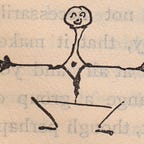A Haunting in Venice: A Review
For the first time in a long time, we decided to make an evening of it and head to our local movie theater and enjoy all the pleasures of the big screen. Sitting through twenty minutes of in-house ads and “Noovie” productions was less pleasant, but surrounded by other adults we all chatted amicably amongst ourselves until they went away.
All of us were there to take in the latest episode of Kenneth Branaugh’s Hercule Poirot, A Haunting in Venice. Its trailers seemed intriguing enough, though our hopes were tempered by our memory of the misery of A Death on the Nile.
**Warning: spoilers ahead.**
Venice is everything Nile is not. If Murder on the Orient Express was weighed down by too large of an all-star cast, each of whom needed a certain amount of screen time, and an overly fussy Poirot who feels the need to mention his “little gray cells” in almost every scene and if A Death on the Nile still had too many stars and too frenetic a visual style, then A Haunting in Venice shines thanks to its small cast, its sharp dialogue, and highly cinematic approach to the movie-going experience.
The small cast means that every character gets to feature in multiple scenes, and they get to speak and act in ways that give them flesh: each character emerges with multiple reasons for doing the things they do. And a lot of those reasons come through with sharp, sometimes arch, dialogue. The characters in Venice do not speak the way we do: they speak the way we wish we did. And that makes for a far better audience experience. (I can’t remember any of the dialogue from any of the MCU, save perhaps the first Iron Man, but Val Kilmner’s Doc Holiday? “I’m your huckleberry.”)
Underlying all this and erupting as needed is the film-making. Venice takes its time with shots. The camera lingers and swirls. It turns upside down at least once. It captures what it’s like to be inside a house that so many think is haunted and, super spoiler alert, it captures what it’s like for a drugged Poirot.
The effect is to make you wonder what is real and what is not, which is a lovely addition to a film concerned with the weight of memories, how they press upon us and shape our perception, leading either to actions we do not understand ourselves or to inaction for fear of creating yet more memories.
Branagh’s Poirot has matured, with Branagh’s portrayal more mature than it has been than in the previous films. From the subdued mustache to the casting aside of affectations, this Poirot is relatable: he is a man haunted by a lifetime of seeing the worst that humans can do. As a number of characters note, where he goes there is death.
This idea carries across to other characters as well, to the nurse turned psychic substantiated by Michelle Yeoh. Both her and the doctor have survived being medical personnel in war. And you get the sense — spoiler ahead — that their deaths brings them peace in some fashion.
But the film swirls around Poirot, who we see has aged: Branagh invites the camera up close to see the wrinkles, the puckering around the eyes. Poirot’s relationship to his own image is highlighted by the role of mirrors in Venice: he sees things in them he does not wish to see, and, at one point, he smashes one to keep from seeing in it.
The strength of the film, to my mind, is precisely that the haunting that happens in Venice is of Poirot himself, who here is perhaps a bit past his prime, perhaps worn by the darkness he has seen again and again, and now in full retreat from the world, ensconced in a Venetian villa through whose gate only pastries are allowed to pass. The coda at the end of the film is perfect. I won’t spoil that.
